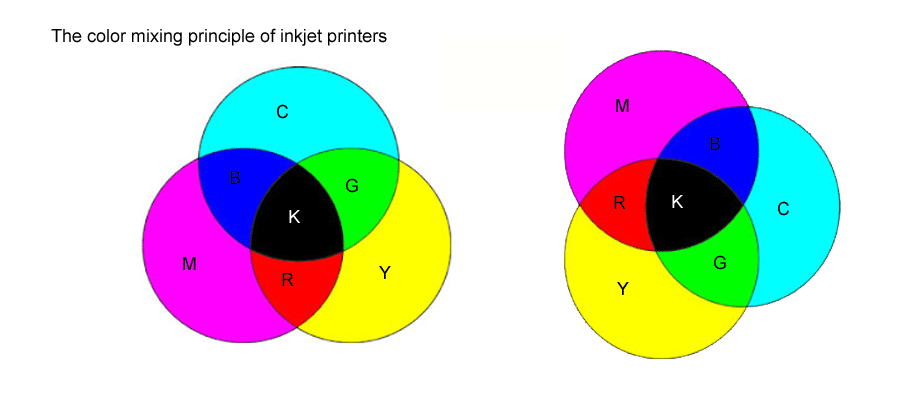Inkjet printer
4 month agoIntroduction
Dye-sublimation heat transfer printing is the most common textile decoration process. The first step involves printing four-color sublimation transfer ink onto sublimation transfer paper using a digital inkjet printer. The ink is then transferred to the textile surface using heat and pressure using a roller sublimation thermal transfer machine.
Current dye-sublimation inkjet printers have advanced to high-speed, high-precision printers equipped with multiple sets of industrial-grade printheads, resulting in revolutionary improvements in both print quality and stability.
Factors to Consider When Choosing a digital inkjet Printer
1. Resolution: As an image moves from the computer to the printer, to the sublimation paper, and finally to the textile surface, its color gradually degrades. A high printer resolution is essential for achieving a detailed, clear transfer effect.
2. Printing Speed: Printing speed depends on the speed of the printheads, which, in addition to being compatible with the driver software and hardware, is also dependent on the number of printheads. The number of printheads increases printing speed exponentially. Some modern printers have over 30 printheads. The greater the number of printheads, the higher the requirements for printer manufacturing precision and software stability. In the current garment processing factories, 4-head digital inkjet printers, 8-head digital inkjet printers, and 16-head digital inkjet printers are the most popular.
3. Compatibility: Make sure your chosen printer supports sublimation transfer paper and matches the type of ink you plan to use (such as dye-based or pigment-based). Printer, sublimation ink, and sublimation transfer paper constitute the three material foundations of printing technology.

Technical paramters.
|
Print head |
Precision industrial piezoelectric nozzle |
||
|
Print head No |
2pcs/4 heads/8 heads |
||
|
Ink type |
Aqueous dye, ECO-solvent ink, Sublimation Ink |
||
|
Ink shade |
Yellow, Magenta, Cyan, Black |
||
|
Rip software |
Maintop PhotoPRINT, Wasatch |
||
|
Max printing width |
1800mm |
||
|
Data transmission interface |
HI-USB2.0 |
||
|
Accuracy of transmission platform |
0.05mm |
||
|
Workroom temperature |
15-300C |
||
|
Humidity |
40-60% |
||
|
Operating System |
Win7/Win8/Win10 |
||
|
Power supply |
Ac220V-50/60HZ |
||
|
Wattage |
2500W |
||
|
Machine size/Net weight |
3070*750*1380MM/230KG |
||
|
Package size/Gross weight |
3250*950*950MM/320KG |
||
|
Printing speed |
Standard mode(3Pass) |
||
|
|
360 |
V360*1080 |
50M2/H |
|
|
Quality mode(4Pass) |
||
|
|
360 |
V720 |
40M2/H |
|
|
High definition mode(6Pass) |
||
|
|
360 |
V720*1080 |
30M2/H |
|
Max printing resolution |
2880DPI |
||
Product description
1. High-strength steel body, more stable
2. Precision feed platform, a stable paper transport, to ensure perfect print quality.
3. Suction feed platform, holding the paper during printing the same position;
4. industrial piezo print heads, high-precision, low noise, low wear, unattended printing operations;
5 .. one brushless servo motor control technology, precise trails, eliminate broken;
6. Automatic cleaning ink stack lift, efficient and complete cleaning effect;
7. External drying device, make sure the ink dried instantaneously;
7. The user-friendly interface, easy to operate;
7. The dual power collecting system and damped discharge system to ensure stable and orderly receipt;
8. High-speed fiber-optic bi-directional communication, data transmission more efficient;
9. VSDT advanced variable droplet control technology and high fault feathering technology, to ensure that the fine reproduction of fine details.

Why do inkjet printer use four-color inks (cyan C, magenta M, yellow Y, and black K)?
Reproducing the vast majority of natural colors with a minimal number of color variations is the foundation of all printing technology. inkjet Printers use the three primary colors to reproduce color according to computer-controlled color ratios. The addition of black ink compensates for the inherent lack of purity in the three primary colors, which results in low black density when mixed.
1. Achieving full-color printing: Cyan, magenta, and yellow are the three primary colors used in subtractive color mixing. Theoretically, mixing these three colors can produce all colors (e.g., cyan + magenta = blue, magenta + yellow = red, cyan + yellow = green). However, in practice, mixing these three colors rarely produces pure black, resulting in a dull, less dense color.
2. Optimizing black output: Adding black ink (K) allows for direct printing of pure black, avoiding color deviations when mixing the three primary colors. This reduces ink consumption, lowering printing costs, and also enhances the clarity and sharpness of text and shadow details.
Printing solution

Sublimation paper

Similar Video Recommendation
If you are interested in the product, contact Bossgoovideo.com for more information
- *To:
- KC Printing Machine (Group) Limited
- *Message:
-
Submit
Main Product:
Automatic Screen Printing machine,
Automatic Pad Printing machine,
Automatic Hot Foil Stamping Machine ,
Pad Printers,
Screen Printers,
Hot Foil Stamping Machines









